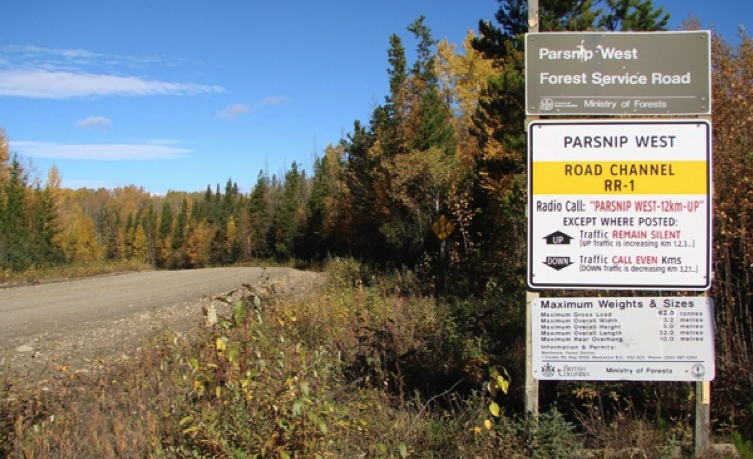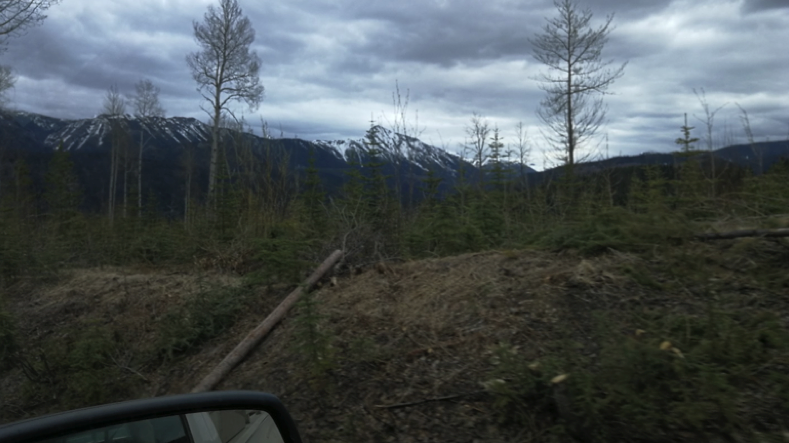How to survive logging road trips: a Rookie’s Guide
July 8, 2019 3:52 pm Leave your thoughts
During my time as a layout crew member, I have made several trips to remote logging camps. These trips to and from camp require travelling a considerable distance on the logging roads that surround Williston Lake. These road trips, while potentially long and fraught with hazards, can be a fun experience if you prepare and execute these trips accordingly. I will be providing tips in the form of three categories Safety first, Stuff to bring, and What to do.
And as always, Safety first
Keep your eyes on the signs: Logging roads are often limited in terms of visibility and room for vehicles to traverse. A myriad of systems have been put in place to keep road users from ending up in possibly fatal crashes while on the roads. Each kilometer of road is given a sign to tell you where you are on the road. You can then use this knowledge to communicate with other road users your whereabouts, which transitions well into my next tip!
Use your Radio: As mentioned before the location and direction of vehicles on logging roads (including your own) is paramount to your safety when making long trips to camp, so obeying the calling procedures (including when and how to call depending on your direction) is very important.
When in doubt, slow down: From potholes to washouts, dust to de-acs, there is no shortage of physical driving hazards on logging roads, and conditions can change hour by hour. Traversing hazards such as large potholes and pulled culverts can require precision and finesse, both of which require you to slow down. Dust is also a major hazard on logging roads as it can obscure your vision and possibly lead to accidents, so don’t follow too close behind people if you’re in a hurry.

The Parsnip FSR which serves A large portion of Williston Lake Photo Credits to ihikebc.com
Stuff to bring
Ride in comfort: Sitting and being jostled for hours on end can be quite uncomfortable at times, but you know what makes being uncomfortable easier, comfortable clothes. Ditch your button up shirts and tight denim jeans, it’s not a fashion show out here people. Nothing is easier to sit in than some comfy sweatpants or shorts, and I guarantee you nobody cares what you look like out there, so you shouldn’t either.
Ear Candy: For your listening pleasure, or to just drown out the sounds of your tires on the dirt, podcasts, music, and audiobooks are essential. Whether you’re playing them for the whole car or listening whilst watching the blur of trees you drive by, listening to something is a great way to occupy yourself mentally when on a long logging road trip.
Food and water: Typically seen as essential for our everyday survival, food and water are indispensable when committing to several hours in a pickup truck. Eating food and staying hydrated is not only a productive way to pass your time; you also keep yourself from getting hungry and irritable to the detriment of your travel partners.
What to do
Talk: Get to know your truck mates. You will find these long rides to be an excellent bonding experience if you’re willing to open up and encourage others to share thoughts and feelings.
Stop and smell the Rec Sites:
The BC Forest service did an excellent job of building simple but effective recreation sites along the forest service roads. These recreation sites are often situated on beautiful and remote locations along the FSR roads, and whether you’re stopping for a bathroom break or to relax and have a bite to eat, rec sites are the best place to do so.
Look out the window:
From wildlife to a blur of trees on the logging road. There’s plenty of beauty to be seen in the remote Canadian wilderness, make sure to take in as much as you can.

